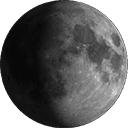SDSS DR7 superclusters Principal component analysis
Author(s): Einasto, M.; Liivamaegi, L. J.; Saar, E.; et al.
Source: ASTRONOMY & ASTROPHYSICS Volume: 535 Article Number: A36 DOI: 10.1051/0004-6361/201117529 Published: NOV 2011
Context. The study of superclusters of galaxies helps us to understand the formation, evolution, and present-day properties of the large-scale structure of the Universe.
Aims. We use data about superclusters drawn from the SDSS DR7 to analyse possible selection effects in the supercluster catalogue, to study the physical and morphological properties of superclusters, to find their possible subsets, and to determine scaling relations for our superclusters.
Methods. We apply principal component analysis and Spearman’s correlation test to study the properties of superclusters.
Results. We have found that the parameters of superclusters do not correlate with their distance. The correlations between the physical and morphological properties of superclusters are strong. Superclusters can be divided into two populations according to their total luminosity: high-luminosity ones with L-g > 400 x 10(10) h(-2) L-circle dot and low-luminosity systems. High-luminosity superclusters form two sets, which are more elongated systems with the shape parameter K-1/K-2 0.5. The first two principal components account for more than 90% of the variance in the supercluster parameters. We use principal component analysis to derive scaling relations for superclusters, in which we combine the physical and morphological parameters of superclusters.
Conclusions. The first two principal components define the fundamental plane, which characterises the physical and morphological properties of superclusters. Structure formation simulations for different cosmologies, and more data about the local and high redshift superclusters are needed to understand the evolution and the properties of superclusters better.






